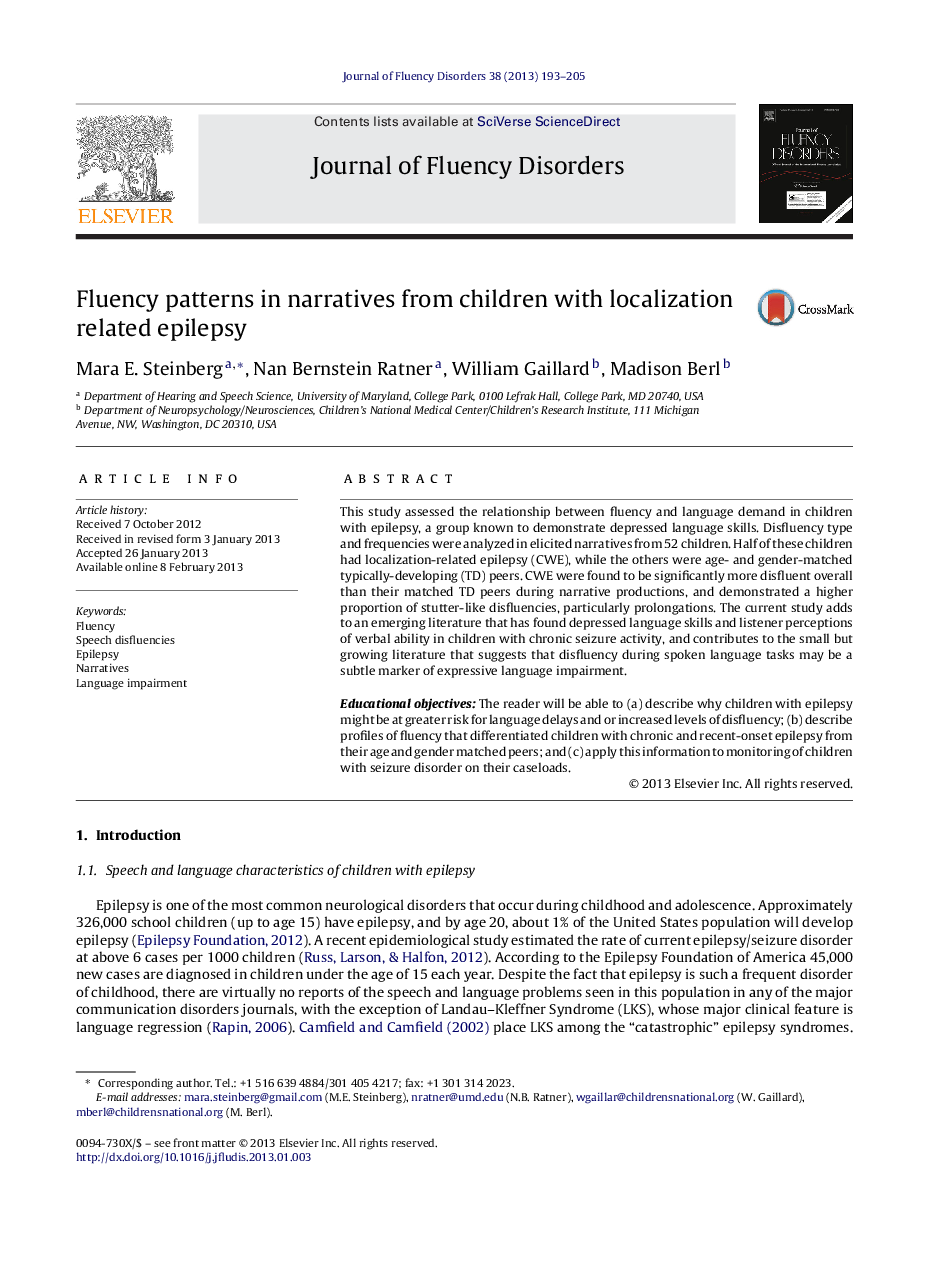| Article ID | Journal | Published Year | Pages | File Type |
|---|---|---|---|---|
| 911373 | Journal of Fluency Disorders | 2013 | 13 Pages |
This study assessed the relationship between fluency and language demand in children with epilepsy, a group known to demonstrate depressed language skills. Disfluency type and frequencies were analyzed in elicited narratives from 52 children. Half of these children had localization-related epilepsy (CWE), while the others were age- and gender-matched typically-developing (TD) peers. CWE were found to be significantly more disfluent overall than their matched TD peers during narrative productions, and demonstrated a higher proportion of stutter-like disfluencies, particularly prolongations. The current study adds to an emerging literature that has found depressed language skills and listener perceptions of verbal ability in children with chronic seizure activity, and contributes to the small but growing literature that suggests that disfluency during spoken language tasks may be a subtle marker of expressive language impairment.Educational objectives: The reader will be able to (a) describe why children with epilepsy might be at greater risk for language delays and or increased levels of disfluency; (b) describe profiles of fluency that differentiated children with chronic and recent-onset epilepsy from their age and gender matched peers; and (c) apply this information to monitoring of children with seizure disorder on their caseloads.
